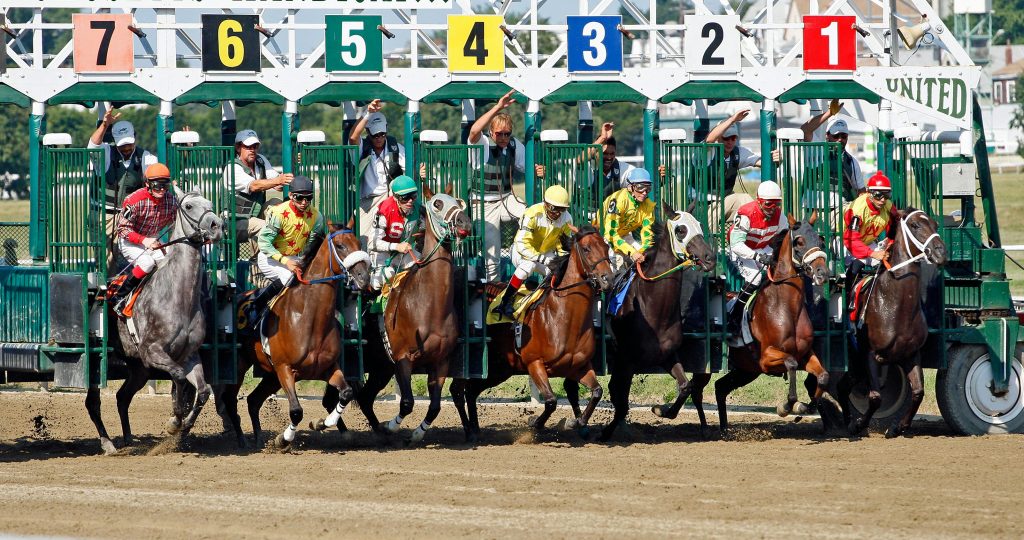Guide to Horse Race Betting
How to Build a Horse Racing Betting System
Betting on horse racing can be both thrilling and rewarding when approached with the right strategy. For those looking to improve their success rates, developing a personalized betting system is a smart way to approach horse racing. A well-built betting system provides structure, discipline, and the opportunity to leverage data and strategies to make informed decisions.
We’ll walk you through the steps to create your own horse racing betting system, helping you move beyond casual betting toward a more systematic, strategic approach.


What is a Horse Racing Betting System?
A betting system is a structured approach that guides bettors in making their decisions based on specific criteria and rules. Instead of betting based on gut feelings or hunches, a betting system allows you to use data, patterns, and strategies to make more consistent and well-informed choices. The goal is to find a sustainable way to bet on races while managing risks effectively.
Key Benefits of a Betting System
Consistency:
A system helps you follow a set process rather than making impulsive decisions.
Data-Driven:
Your bets are informed by research, data, and trends rather than luck.
Risk Management:
Proper systems include built-in risk management techniques, reducing losses.
Set Clear Objectives for Your Betting System
Before diving into any horse racing strategies, it’s essential to define the objectives of your betting system. Understanding your goals will help shape the framework of your system.
Consider the following questions:
Are you betting for fun, or is your goal to generate long-term profit?
What’s your risk tolerance? How much are you willing to lose without affecting your finances?
Do you prefer focusing on specific races or certain types of bets?
These objectives will guide your system’s parameters and dictate which strategies you will prioritize.
Research and Analyze Horse Racing Data
A strong betting system building is built on solid research. Understanding the key factors that influence the outcome of horse races is vital for making informed decisions. The most successful bettors spend time analyzing the following aspects:
Factors to Consider:
Horse Form:
Study the recent performance of each horse, including wins, places, and failures.
Jockeys and Trainers:
Look at the track record of the jockey and trainer, as their experience can heavily influence a race’s outcome.
Race Conditions:
Consider the race type (flat racing, steeplechase), track conditions (turf, dirt), and weather.
Odds Movements:
Pay attention to how odds fluctuate leading up to the race, as this often reflects expert opinions and betting trends.
By keeping track of these data points, you can begin to identify patterns and trends that inform your betting decisions.
Choose Your Betting Strategy
With a firm foundation in horse racing data, the next step is selecting the betting strategies that will form the core of your system. There are several popular approaches to betting on horse racing, each with its advantages and risk levels.
Popular Horse Racing Strategies:
1. Value Betting
Value betting is about identifying horses where the odds are longer than the horse’s actual chance of winning. The key to this strategy is determining whether the bookmaker has underestimated a horse’s potential, providing you with the opportunity to capitalize on favorable odds.
2. Lay Betting
Lay betting, typically done on betting exchanges, allows you to bet against a horse winning. If you believe a highly favored horse is unlikely to perform, you can “lay” that horse, benefiting from its loss. This strategy requires a good understanding of when to lay and how to calculate the risk involved.
3. Dutching
Dutching involves placing bets on several horses in a race, ensuring that if any of them win, you’ll make a profit. This method requires precise calculations, but it allows you to cover multiple outcomes.
4. Each-Way Betting
Each-way betting is a safe strategy where you bet on a horse to either win or place. While payouts for placements are lower, it minimizes risk by giving you two chances to win.
5. Banker Bets
A banker bet is when you confidently place a large portion of your stake on a single horse that you believe has a very high chance of winning. This is a high-risk strategy that requires thorough research but can yield significant returns if done successfully.
These objectives will guide your system’s parameters and dictate which strategies you will prioritize.
Manage Your Bankroll Effectively
No matter how well-constructed your betting system is, bankroll management plays a crucial role in your long-term success. Managing your funds carefully helps prevent large losses and ensures that you can keep betting over an extended period.
Tips for Bankroll Management:
Set a budget:
Establish how much you’re willing to invest in betting, and never go beyond this amount.
Stake percentage:
Only bet a small percentage (1-5%) of your total bankroll on each race. This minimizes the impact of any losses.
Use a staking plan:
A staking plan determines how much to bet on each race. Popular staking methods include flat staking (betting the same amount every time) or percentage staking (betting a percentage of your total bankroll).
Good bankroll management ensures that even when you hit a losing streak, you still have funds left to continue betting.
Test and Refine Your Betting System
Once you’ve created your betting system, the next step is to test it. You can start with small bets or use historical data to simulate how your system would perform. Track your bets and analyze the results over time.
Key Areas to Evaluate:
Win Rate:
How many of your bets are winning?
Return on Investment (ROI):
Are you making more money than you’re losing?
Adjustments:
Are certain strategies or conditions consistently yielding better results?
If your initial testing isn’t delivering the desired outcomes, don’t be afraid to tweak your approach. Fine-tuning is a critical part of building a successful betting system.
Discipline and Consistency
One of the most important aspects of using a betting system is discipline. It can be tempting to deviate from the system when you experience a losing streak or see an enticing opportunity. However, the success of your system depends on following the rules you’ve established.
Stay Disciplined by:
Avoiding emotional decisions:
Stick to your system’s rules and don’t chase losses.
Tracking your bets:
Maintain a detailed log of every bet you make, so you can review your progress and avoid repeating mistakes.
Adjusting based on results:
While consistency is key, remain open to making small adjustments if certain strategies aren’t performing.
Building a successful horse racing betting system building requires time, research, and discipline, but the rewards can be well worth the effort. By setting clear objectives, analyzing horse racing data, choosing the right strategies, managing your bankroll, and maintaining discipline, you can increase your chances of long-term success.
Remember, no system can guarantee consistent wins, but a well-structured approach helps reduce risks and improve your overall betting experience. As you develop your system, keep learning, refining, and most importantly, betting responsibly.